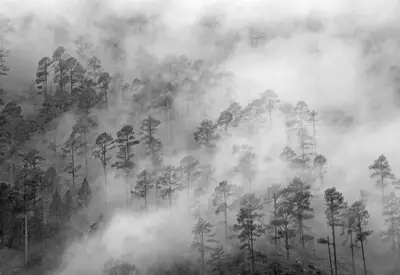Sirmaur District
Things to do in Sirmaur RegionVisit Paonta Sahib GurudwaraSikh history has a close connect with this Gurudwara. Guru Gobind Singh, the 10th Guru, camped at Nahan for four years till 1685 AD and wrote much of the holy book Dasam Granth here. Foundations of the Gurdwara was laid by the Guru and it still prizes in possessing many of his relics. An imposing dome crowned iconic building on the bank of ...Things to do in Sirmaur Region
Visit Paonta Sahib GurudwaraSikh history has a close connect with this Gurudwara. Guru Gobind Singh, the 10th Guru, camped at Nahan for four years till 1685 AD and wrote much of the holy book Dasam Granth here. Foundations of the Gurdwara was laid by the Guru and it still prizes in possessing many of his relics. An imposing dome crowned iconic building on the bank of River Yamuna, the Gurdwara attracts a steady stream of Hindu and Sikh pilgrims every day. Free meals offered by the Gurdwara are funded by the contributions made by the community towards the upkeep of the place.
Picnic at Khodri Dak Patthar
An aesthetic fusion of nature and man-made marvels, Khodri Dak Patthar is a picnic spot, just 25 km from Paonta Sahib. It has a quiet park, a swimming pool and a tourist bungalow. An artificial lake formed after the construction of a diversion dam on river Yamuna is a good place to spend leisure time.
Relish fruits and jams at Dhaula Kuan
On way to Paonta Sahib, 20 km from Nahan, Dhaula Kuan is known for its juicy orchards of citrus fruits and mangoes. At a factory outlet here, freshly packed juices, jams, pickles and canned fruits attract ready buyers . At a little distance is the Kastasan Devi temple, built to commemorate an old battle victory by a former ruler of Nahan.
Fairs and Festivals in Sirmaur
Renuka Fair
Renuka fair is held in the scenic environs of Renuka Lake in November. The week-long festival celebrates the symbolic reunion of Lord Parshuram with his mother Mata Renuka. Lord Parshuram is brought in a palanquin from the temple at Jamu Koti village and it departs after taking a holy dip in the lake. Dressed in colourful traditional attire, the celebrations included dancing to lively beats played upon age old folk songs, community socializing and trading of surplus produces.
Bawan Dawadashi Fair, Nahan
In early September over fifty idols of local deities from the neighbourhood congregate at Nahan. Riding in palanquins and carried by the devotees, these village gods and goddesses (Devtas & Devis) visit the Jagannath Temple. Here the idols are immersed in the holy waters of a pool and retrieved after the symbolic ritual of purification. By mid night the deities return to their temples.
Balasundari Fair
Spread over nine auspicious Navratra days in March/April (Chaitra) and September/October (Ashwina) in accordance with the holy Hindu calendar, Tirlokpur – the abode of goddesses Mahamaya Bala Sundri, takes on a festive look. Devotees throng the place to seek blessings. Ringing the bells hanging at its entrance is considered auspicious. The festival, is a big draw for locals to meet up and for tourists to partake of the religious and social gathering.
Tourist Places in Sirmaur
Nahan
In the low lying Shivalik hills, close to the plains, Nahan was the capital of a proud royal house. Foundations of the hill town was laid out by Raja Karam Prakash in 1621 A.D, whose ancestry is traced to Rajasthan. The rich heritage and culture of Nahan has temples, gardens, a palace and other important historical monuments scattered around town. An eyeful of Rajasthani, Pahari and colonial architecture of the town with cobbled paths, widened road and pretty gardens hold a lot of attraction for tourists. It is the district headquarter of Sirmaur. Nahan is 133 km from Shimla and 84 km from Chandigarh.
Suketi Fossil Park
On the left bank of Markanda rivulet, 21 km from Nahan, discovery of fossil remains of Mesozoic age animals, better known as the age of Dinosaurs spanning from 252 million years ago to about 66 million years ago, did bring the site to international attention. To illustrate its importance, life size fibre glass models of extinct species of hippopotamus, giant tortoise, elephants, giraffes, saber tooth cats, crocodiles and other animals of the age have been put up in a 5 sq km park area. The very sight of these models evokes curiosity about evolution and the ages gone by. The park is first of its kind in the country, developed at the actual discovery site of fossils. A museum here exhibits some of the fossil remains found at the site.
Renuka
Among all natural lakes of Himachal Pradesh, Renuka happens to be the largest. At the lake, fed by underwater springs, one can enjoy boating. Visitors are often amused by water animals like turtles and a variety of fish making a sudden appearance in the lake. The lake has an interesting tale about it. Folklore narrates that Renuka Devi fell from a height after having an argument with her husband. Being a blessed person, a lake formed on the spot where she fell. Even today, when seen from a height, the shape of the lake appears like that of a reclining lady. By the lake are the temples of Renuka ji and Lord Parshuram ji, who was her son. There is also a mini zoo here where many rescued, stray and deserted wild animals are kept.
The Renuka Wildlife Park, in the vicinity of the lake, is worth exploring. Rich in flora and fauna, the leopard, samber, barking beer, spotted deer, jungle cat, Palm civet and birds including blue jay, black partridge, porcupine, drongo, hill crow, common coot, scarlet minivet, bulbul, and green pigeon have been sighted in this sanctuary. Renuka is 45 km from Nahan.
Churdhar
The highest peak of Sirmaur, Churdhar rising to 3,647 meters is a trekkers delight. The views are so wide that George Everest, a surveyor general after whom the world’s tallest peak is named, used the vantage point of Churdhar to survey much of the western Himalayas from. Peaks around Badrinath and Kedarnath can be seen from here and towards the south, vast plains of the Gangetic plains open up to meet the horizon.
Churdhar is accessible from three routes, Chopal, Nohradhar and Haripurdhar. Passing through small villages, cultivated fields and alpine meadows, the trek is moderately difficult but rewarding. Just below the summit is the temple of Shirgul Devta, worshipped in form of a lingam as Chooreshwar Mahadev. At the peak is a recently built temple of Lord Shiva.
Around the massive mountain there is a wildlife sanctuary, a wilderness wealth of herbs and beautiful alpine flora. Walking through the sanctuary one can spot monal, koklas and khaleej pheasants. The canine-toothed musk deer and the Himalayan black are known to inhabit the higher forest areas of the mountain.
Haripurdhar
Perched on a ridge this beautiful hill station with wide views overlooks a valley that was named Bhangayani after a famous temple in the valley. Devi Bhangayani is held to be a relative of Shirgul Maharaj, the presiding deity at Churdhar peak. The scenic landscapes and high rising mountains in the backdrop gives this place the look of a painting on canvas. It also serves as a base camp for a trek to Churdhar. Haripurdhar is 86 km from Nahan.
Baru Sahib
Spread over 400 acres and located amidst the sylvan surroundings, Baru Sahib has come up in recent years. It can be reached from Solan, Rajgarh route (63 km).
Trilokpur
On a isolated hill, 23 km from Nahan, at Trilokpur is the highly revered temple of goddess Mahamaya Bala Sundri that has 84 bells hanging at the entrance. Navratri fairs held twice a year as Chaitra and Ashwina Navratras are a big draw when many pilgrims visit the temple.
The Jaitak Fort
On the outskirts of Nahan, on a steep ridge is this fort that was originally built by the Sirmaur kings. Gurkha invaders took hold of it at the start of the 19th century when they occupied the land. In their battle for supremacy in the hills, Gurkha leader Ranzor Thapa fought a pitched battle with British forces before the area was overtaken by the expanding colonial empire.
Simbalbara National Park
On the border of Nahan – Paonta highway, a densely vegetated area with thick scrub and Sal forests in the Shivalik hills is the wildlife sanctuary that harbours a wide variety of animals and birds. Elevated to a National Park in 2010, at Simbalbara National Park, Goral Deer, Sambhar, Spotted Deer, Chittal, Himalayan Black Bear, Hanuman Langurs, Leopards, Wild Boars and other animals have been sighted. Hornbill, Billed Pageant, Myna, Parrots among other birds are easily spotted. The park is protected and managed by the state forest department. It is at a distance of 69 km from Nahan and 52 km from Paonta Sahib.
Rajgarh
A quiet and lush green valley with pine forest, Rajgarh with many apple and stone fruit orchards is particularly known for its peaches. Some of the best peaches in the country come from the valley. River Giri flows past it and if you are looking for an offbeat destination for a holiday, search no more. Rajgarh is on the Solan – Nahan route. Some of the most well organized nature-centric and adventure centric-camps are found in this region. The famed Baru Sahib Gurdwara, 29 km from Rajgarh, is worth a day visit. Reached from two directions, the distance from Solan to Rajgarh is 40 km and from Nahan it is 82 km away.
Sarahan
Sarahan is a hill top destination that offers a panoramic views of the Chandigarh plains on one side and an inspiring view of the Churdhar peak on the other. There are good trekking opportunities around this less explored hill station. Sarahan is 42 km from Nahan.
Habban valley
At 2063 m Habban valley is a scenic village. It is surrounded by a deodar forest. There are orchards of peach and apple. You can trek from here to Churdhar. Habban is 51 km from Solan.






